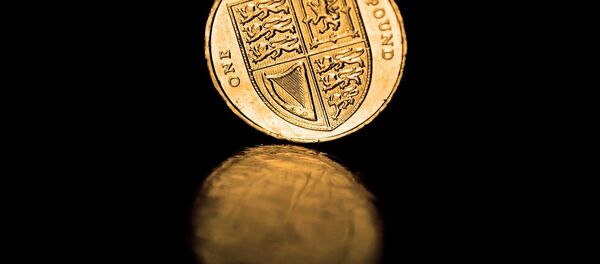Kristian Rouz – The UK retail segment had slowed down at the beginning of this year amidst surging inflation stemming from the pound sterling’s plunge and the rising costs of imports, almost justifying the murky Brexit observations made earlier.
Christ has risen in April, and so did the UK retail segment in one of the unlikeliest comebacks among all sectors of the British economy this year thus far. UK shoppers spent 2.3 percent more in April than they did the previous month, allowing the retail sector to massively surpass earlier forecasts of a 1-percent expansion last month, producing more optimistic GDP expectations for the second quarter of this year – mostly, thanks to Easter holiday shopping, supported by the upbeat macroeconomic developments.
Year-on-year, UK retail sales advanced 4 percent in April, the Office for National Statistics (ONS) said. UK domestic consumption makes up some 79 percent of the nation’s GDP.
“Today’s figures do at least support our view that with credit conditions remaining supportive, employment growth still strong and consumers’ confidence robust, household spending growth is likely to slow only gradually this year rather than collapse completely,” Ruth Gregory of Capital Economics said.
The surge in UK retail in April looks even better compared to just 0.3-percent expansion in the entire first three months of this year. Meanwhile, the prices are still quite high despite the inflationary pressures having eased together with the pound’s rebound: US consumers spent 7.1 percent more money in April than they did a year ago, producing the aforementioned 4-percent surge in retail sales.
The BOE, however, suppose that even without policy intervention, UK inflation will peak at 2.8 percent later this year, subsequently returning back to the target 2 percent thereafter.
The British pound stands firm at $1.30, having rebounded from last year lows of $1.16-1.20, allowing for imports prices to settles somewhat. At the same time, the Brexit-inspired recovery in UK manufacturing jobs and wage inflation has pushed disposable incomes of UK households higher, whilst the accommodative central bank borrowing costs and less strict austerity on the fiscal side have both left more money in the average Briton’s pockets.
Observations suggest that the 1.5-percent decline in sales over the first quarter is effectively offset by April’s massive gains, meaning that even if retail halts at zero over the next two months (which is unlikely), there will still be quarter-on-quarter growth now.
“This provides another reason to be optimistic that the economy may have regained some pace in the second quarter,” Capital Economics’ Gregory said.
Shop prices were 3.1 percent higher year-on-year, surpassing the broader pace of inflation as fuel prices are still high. The British Retail Consortium (BRC), however, says that the ONS estimate of April retail performance is lower than actual. The BRC claims the retail sector rose by 6 percent in April as Easter shoppers turned out to be overenthusiastic.
“The ONS data is undoubtedly much more flaky and subject to volatility than a lot of the more precise data from industry,” Clive Black of Shore Capital said.
Inflation, however, is still outpacing the gains in worker compensation, and the solid labour market is not much of help as low labour productivity is hindering wage inflation. In the long run, this could contribute to an erosion of the Britons’ purchasing power, yet gains in consumer prices are projected to slow, whilst low unemployment and the resurgence in manufacturing jobs will contribute to increases in worker compensation as early as this year.




